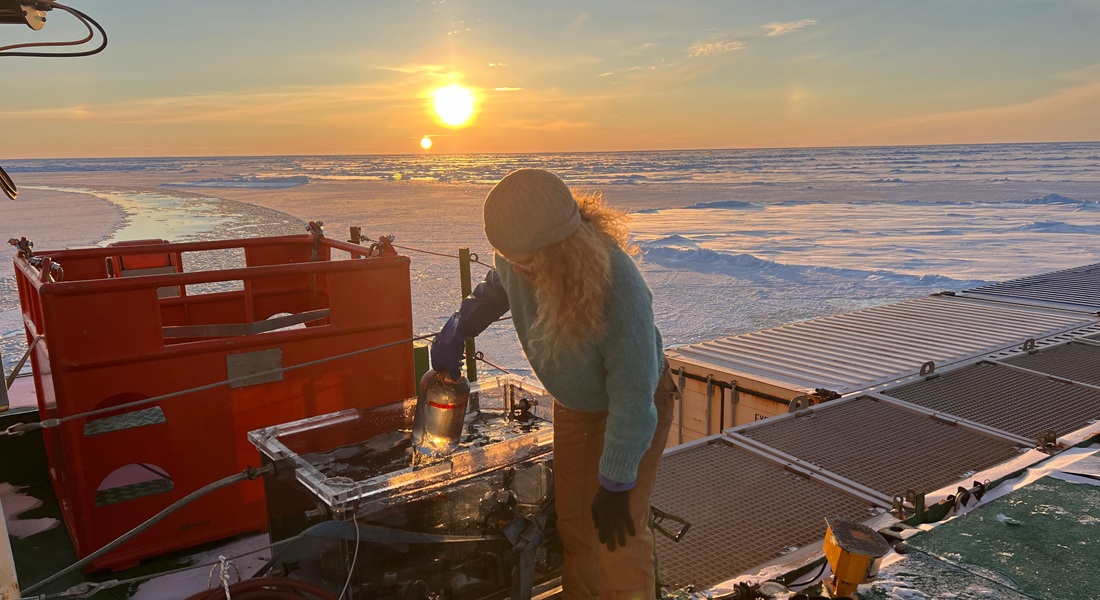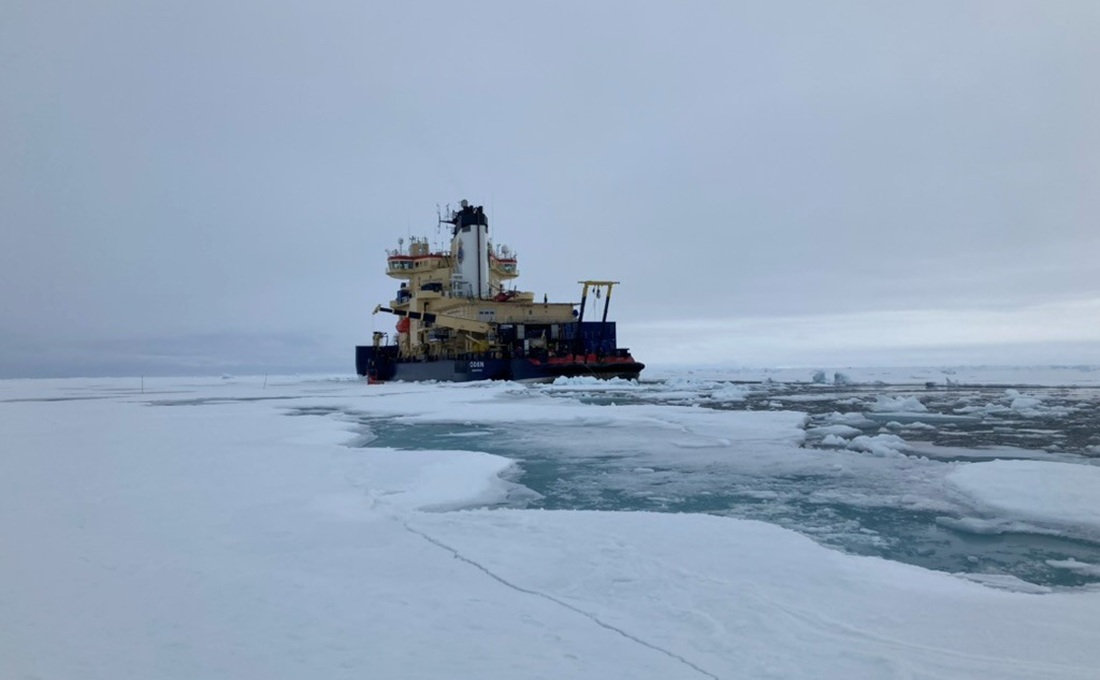Important phenomenon discovered in the Arctic – could boost marine life
Researchers from the University of Copenhagen have discovered an important phenomenon beneath the Arctic sea ice that was previously thought impossible. This phenomenon could have implications for the food chain and the carbon budget in the cold north.

The shrinking sea ice in the Arctic Ocean is, overall, a disaster. But paradoxically, the melting of the ice can also fuel the engine of the Arctic food chains: algae.
Algae are the main food source for life in the sea, but they need nitrogen to grow. And nitrogen is in short supply in the Arctic Ocean. However, a new international study led by the University of Copenhagen indicates therewill probably be more of it in the future than previously thought. This could change the future prospects for marine life in the High North and possibly for the carbon budget.
The researchers are the first to discover that the phenomenon of nitrogen fixation occurs beneath sea ice even in the central Arctic Ocean. Nitrogen fixation is a process in which special bacteria convert nitrogen gas (N2) dissolved in seawater into ammonium. Ammonium helps the bacteria to grow, but it also benefits algae and the rest of the food chain in the sea.
"Until now, it was believed that nitrogen fixation could not take place under the sea ice because it was assumed that the living conditions for the organisms that perform nitrogen fixation were too poor. We were wrong," says Lisa W. von Friesen, lead author of the study and former PhD student at the Department of Biology.
Less ice could mean more algae
Whereas in most other oceans it is cyanobacteria that perform nitrogen fixation, the study shows that in the Central Arctic Ocean it is a completely different type of bacteria that converts nitrogen: the so-called non-cyanobacteria.
The researchers have measured the highest rates of nitrogen fixation at the ice edge, where the ice melts most actively. Although the bacteria can perform nitrogen fixation under the ice, it is easier for them to do so along the ice edge. So as the sea ice retreats and the area of melting expands, larger amounts of nitrogen are expected to be added through nitrogen fixation.
"In other words, the amount of available nitrogen in the Arctic Ocean has likely been underestimated, both today and for future projections. This could mean that the potential for algae production has also been underestimated as climate change continues to reduce the sea ice cover," says Lisa W. von Friesen.
‘Because algae are the primary food source for small animals such as planktonic crustaceans, which in turn are eaten by small fish, more algae can end up affecting the entire food chain’ adds Lisa W. von Friesen.

May affect the ocean's CO2 uptake
In addition, the newly discovered source of nitrogen could also be beneficial for the uptake of CO2 – at least regionally. More algae make the ocean better at absorbing CO2.
ABOUT THE STUDY
- The scientific article about the study has just been published in the journal Communications Earth & Environment.
- The researchers behind the study come from: University of Copenhagen, Denmark; Linnaeus University, Sweden; Alfred Wegener Institute, Germany; Aix Marseille University, France; National Oceanography Centre, United Kingdom; Max Planck Institute for Chemistry, Germany; Stockholm University, Sweden and Swedish University of Agricultural Sciences, Sweden.
- The study is based on two scientific expeditions with the ships IB Oden and RV Polarstern. Measurements were taken at 13 different locations across the central Arctic Ocean, in the sea off northeast Greenland and north of Svalbard.
"For the climate and the environment, this is likely good news. If algae production increases, the Arctic Ocean will absorb more CO2 because more CO2 will be bound in algae biomass. But biological systems are very complex, so it is hard to make firm predictions, because other mechanisms may pull in the opposite direction," says Lasse Riemann, professor at the Department of Biology and senior author of the study.
Nevertheless, the researchers believe that nitrogen fixation should be included in forecasts for the Arctic Ocean.
‘We do not yet know whether the net effect will be beneficial for the climate. But it is clear that we should include an important process such as nitrogen fixation in the equation when we try to predict what will happen to the Arctic Ocean in the coming decades as sea ice declines,’ says Lasse Riemann.
Contact
Lasse Riemann
Professor
Department of Biology
University of Copenhagen
Email: lriemann@bio.ku.dk
T: +45 3532 1959
M: +45 5142 3935
Lisa W. von Friesen
Postdoc
Linnaeus University
Kalmar, Sweden
Email: lisa.winbergvonfriesen@lnu.se
M: +46 723654658
Maria Hornbek
Communication Consultant
UCPH Communication
University of Copenhagen
Email: maho@adm.ku.dk
M: +45 2295 4283
